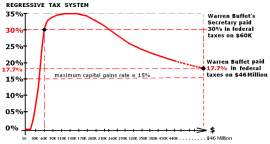
An Easy Guide to US Income Tax

What is the Income Tax? An income tax is a fundamental levy imposed on an individual or entity’s income. There are many forms of income taxation; the levy can be based off of a progressive, proportional, or regressive system. Individual income taxes typically tax the total income of the individual (some deductions are permitted), while the corporate income tax will tax the entity’s net income—the difference between the corporation’s gross receipts, expenses, and various write-offs. The majority of governments are funded, at least in some part, by the income tax. The monies earned through the income tax are used to fund public services, federal programs, and defense budgets. The majority of income taxation models are levied at the time of a sale or service, however, other income taxation models will be collected at the end of a fiscal year—the collection methods are designed by the governing bodies. The income tax, in essence, is a bill from the federal and corresponding state governments for individuals and entities earning salaries through both investment and employment. IN the United States, the income taxation model is considered a progressive tax, because the individual’s financial obligation rises with their level of reportable income. This relationship simply states, that those American workers who earn higher salaries are subjected to a higher tax rate. In the United States the income tax is collected through a set percentage. These percentages will change based on the party in office and more specifically the particular President’s income taxation model. Typically there are 8 tax brackets that tax citizens from 12% (those who earn the least amount) to 35% (for those who earn above a salary in the range of $335,000). The income tax can only be levied on an individual or entity’s positive income; income tax is never placed on a net loss. The basic income tax method allows individuals to earn a certain amount of non-taxable income. This income is calculated by the standard deduction amount offered on the federal and state taxation forms. If a taxpayer has not earned more than the standard deduction, then he or she would not owe any income tax. The income tax is typically collected through each paycheck; the payroll department of a company is obligated to deduct a set percentage of money from each paycheck for the fulfillment of the income tax. Federal and state income tax is deducted according to a calculation based on the wage earner’s dependency status, their monthly income, and their dependency status. In addition to the income tax, other payroll deductions will be enforced to cover Social Security contributions, union dues (if applicable) voluntary contributions, and insurance payments. The amount of funds collected for the state and federal income tax is later reported (during tax time) on an official form called a W-2. If the income is not met with an taxable deductions, the taxpayer may file using a separate form called a 1099. During the income tax season (January to April 14), taxpayers must report all of their total income earned from both wages and profits from investments. The standard deduction is then subtracted from this total and the remainder is deemed as the taxable income.


















